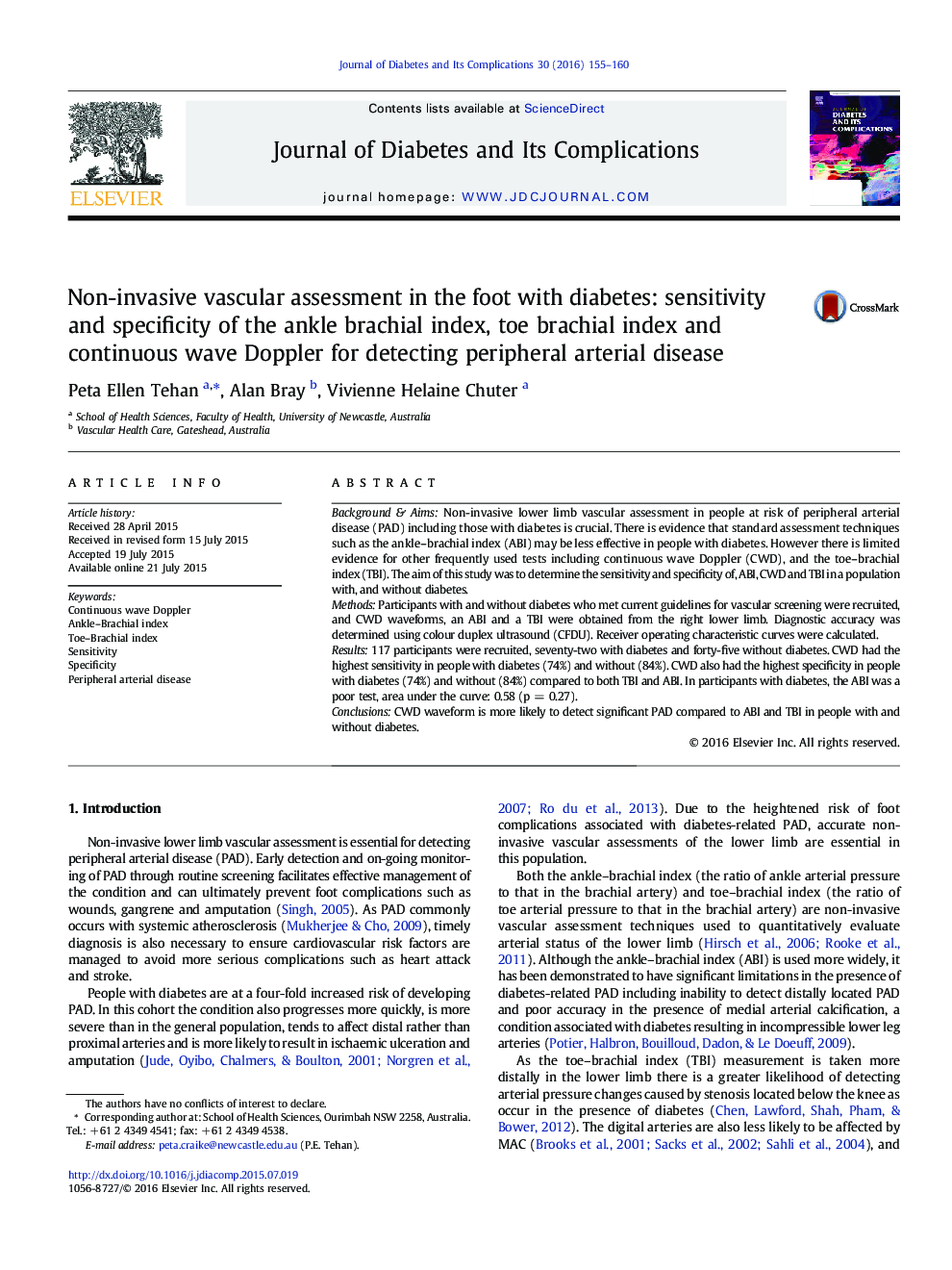| Article ID | Journal | Published Year | Pages | File Type |
|---|---|---|---|---|
| 2804163 | Journal of Diabetes and its Complications | 2016 | 6 Pages |
Background & AimsNon-invasive lower limb vascular assessment in people at risk of peripheral arterial disease (PAD) including those with diabetes is crucial. There is evidence that standard assessment techniques such as the ankle–brachial index (ABI) may be less effective in people with diabetes. However there is limited evidence for other frequently used tests including continuous wave Doppler (CWD), and the toe–brachial index (TBI). The aim of this study was to determine the sensitivity and specificity of, ABI, CWD and TBI in a population with, and without diabetes.MethodsParticipants with and without diabetes who met current guidelines for vascular screening were recruited, and CWD waveforms, an ABI and a TBI were obtained from the right lower limb. Diagnostic accuracy was determined using colour duplex ultrasound (CFDU). Receiver operating characteristic curves were calculated.Results117 participants were recruited, seventy-two with diabetes and forty-five without diabetes. CWD had the highest sensitivity in people with diabetes (74%) and without (84%). CWD also had the highest specificity in people with diabetes (74%) and without (84%) compared to both TBI and ABI. In participants with diabetes, the ABI was a poor test, area under the curve: 0.58 (p = 0.27).ConclusionsCWD waveform is more likely to detect significant PAD compared to ABI and TBI in people with and without diabetes.
